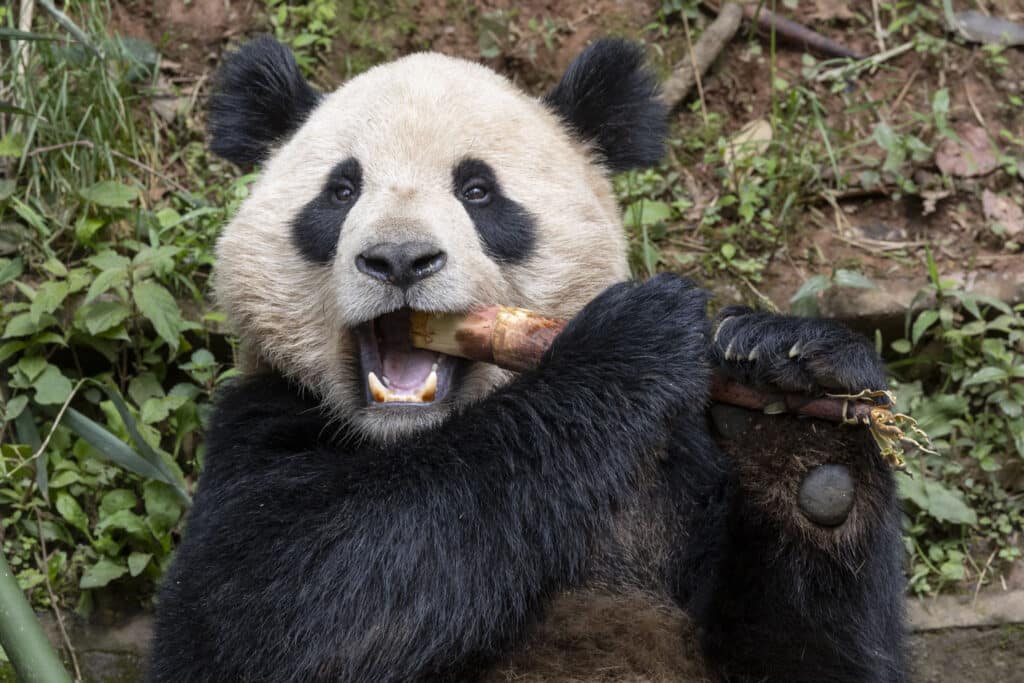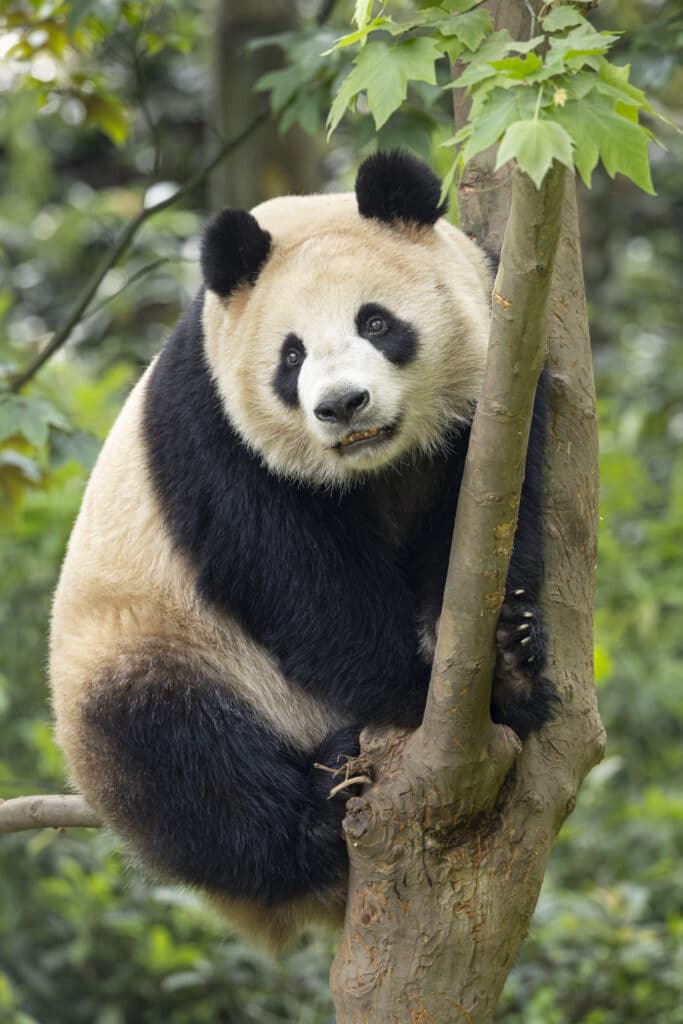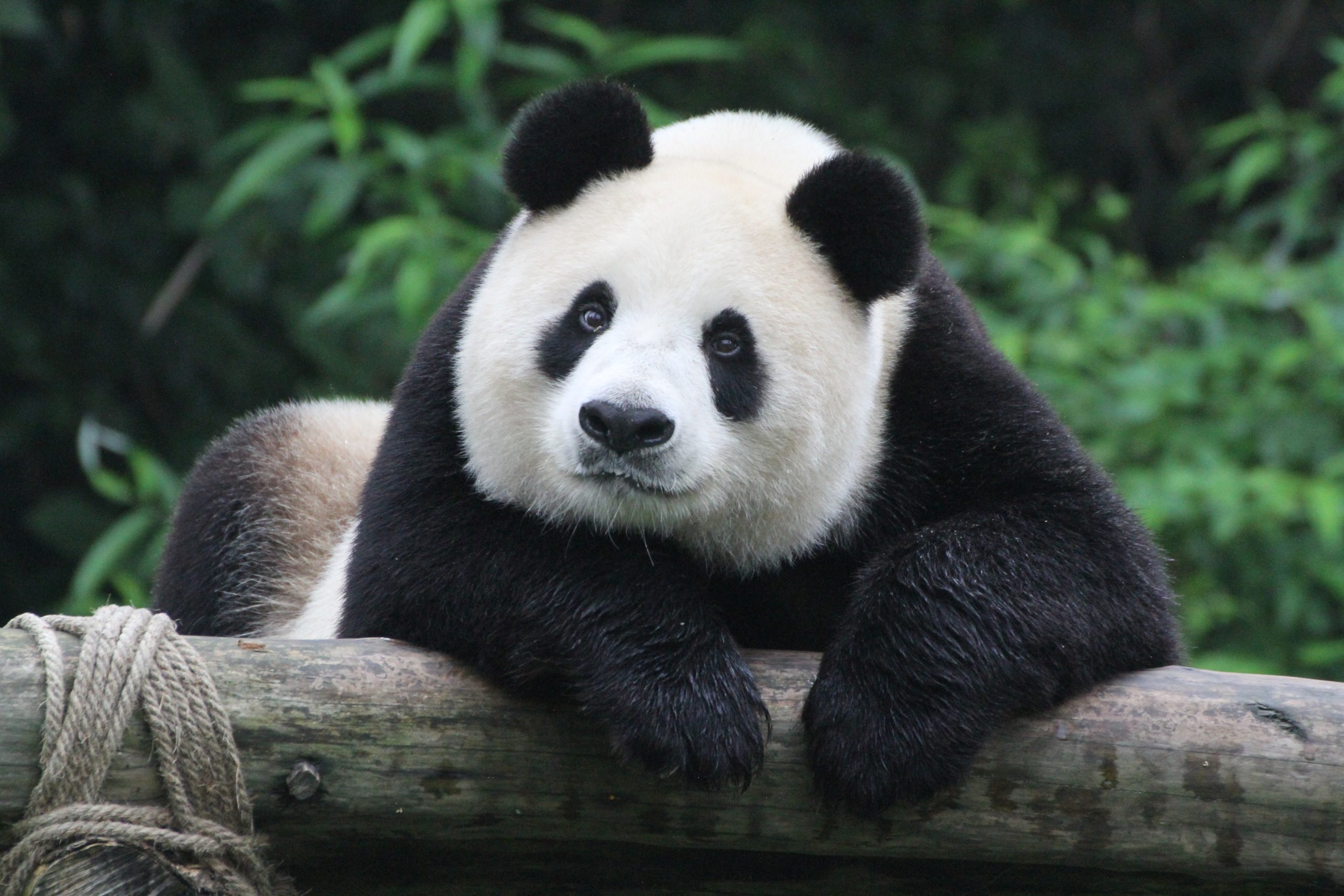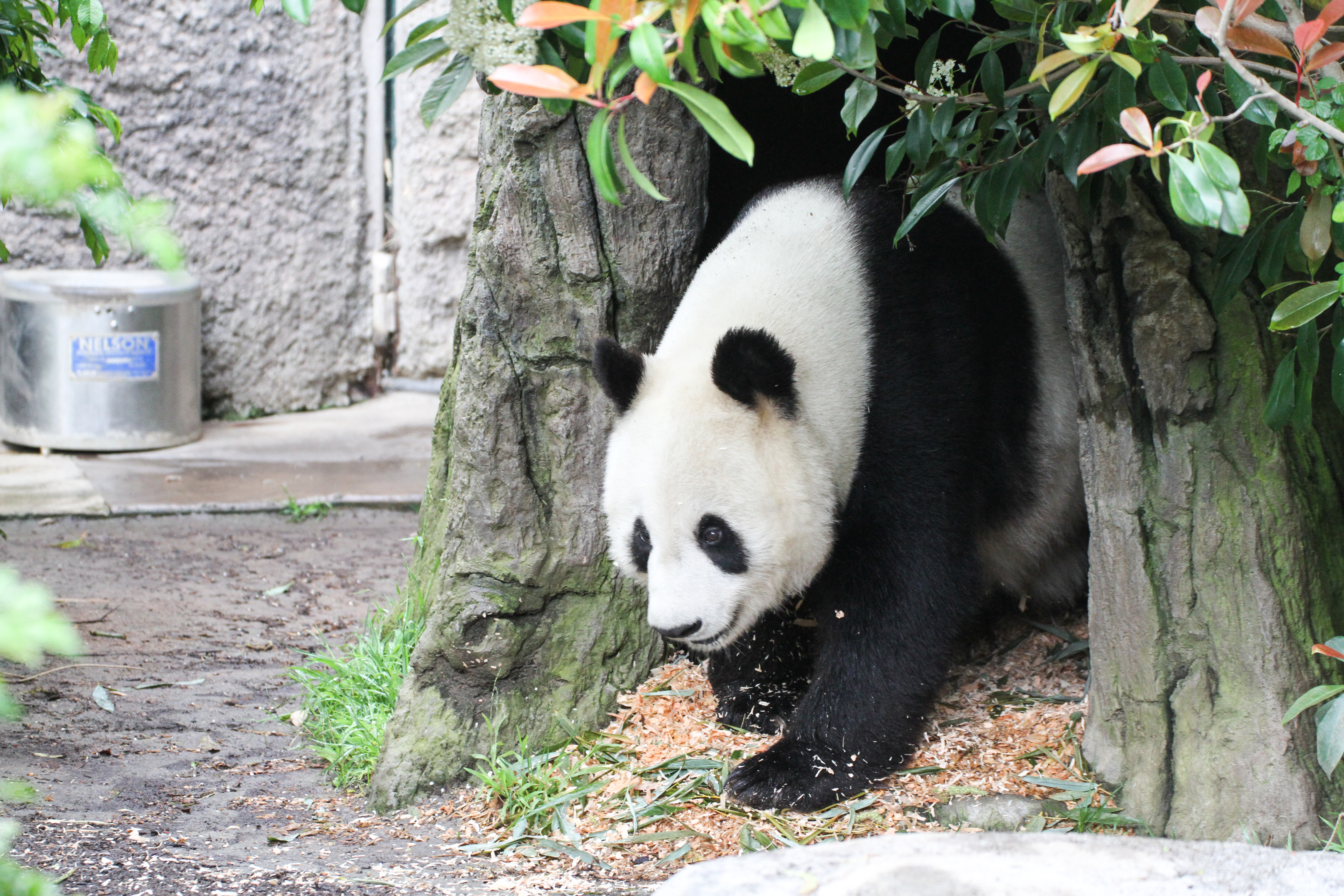San Diego Zoo's new panda pair
San Diego Zoo Wildlife Alliance conservation and care team leaders
recently visited China and met Yun Chuan (pronounced yoon chu-an) and Xin Bao (pronounced sing
bao) the two giant pandas to be cared for by San Diego Zoo.
“It was an honor to see Yun Chuan and Xin Bao in person and meet our conservation partners
caring for them at the Wolong and Bifengxia Panda Bases,” said Dr. Megan Owen, vice president of
conservation science at San Diego Zoo Wildlife Alliance. “Yun Chuan’s lineage has deep connections to
the San Diego Zoo and we’re excited by the prospect of caring for them.”
Yun Chuan is a nearly five-year-old male panda. He is described as mild-mannered, gentle and
lovable. His mother, Zhen Zhen (pronounced jen jen), was born at San Diego Zoo in 2007 to parents Bai
Yun (pronounced bye yoon) and Gao Gao (pronounced gow gow). The first character of his name,
“Yun,” is a nod to his grandmother Bai Yun, who thrived at San Diego Zoo for 23 years. The second
character of his name, “Chuan,” refers to the province of Sichuan where he hails from Wolong
Shenshuping Panda Base.

Xin Bao is a nearly four-year-old female giant panda who was born in Wolong Shenshuping
Panda Base. She is described as a gentle and witty introvert with a sweet round face and big ears. Her
name means a “new treasure of prosperity and abundance.”

“Our conservation partners in China shared photographs and personality traits of Yun Chuan
and Xin Bao, but meeting them in person was so special. It’s inspiring as people from around the world
come together to conserve, protect, and care for these special bears, and we can’t wait to welcome
them to San Diego,” said Owen.
San Diego Zoo Wildlife Alliance leaders were in China meeting with conservation partners from
China Wildlife Conservation Association on prospective research programs to protect and conserve
giant pandas and their habitat. They also met with giant panda care specialists to discuss and
collaborate on specialized care and nutrition programs for pandas.The date of Yun Chuan and Xin Bao’s exact arrival in San Diego is not yet known, as San Diego Zoo Wildlife Alliance is working through the necessary steps with its U.S. and Chinese conservation partners, looking forward to a prospective arrival this summer.
San Diego Zoo Wildlife Alliance has a nearly 30-year conservation partnership with leading
conservation institutions in China focused on protecting and recovering giant pandas and the bamboo
forests they depend on. These include critical findings on giant panda reproductive behavior and
physiology, nutritional requirements, habitat needs and genetic research among other areas of focus.
The efforts include developing a giant panda milk formula and, with our partners, other neonatal
conservation techniques that dramatically increased survival rates for nursery-reared cubs from 5% to
95%, the first successful artificial insemination of a giant panda outside of China and contributing
valuable expertise to efforts led by Chinese scientists to track wild giant pandas at the Foping National
Nature Reserve using GPS technology. These collaborative efforts contributed to the International
Union for Conservation of Nature Red List downgrading the giant panda from Endangered to
Vulnerable in 2021.
Although the conservation status of the giant panda is improving, there is still much work
needed to ensure they remain on the path to recovery with healthy populations and flourishing
ecosystems. The conservation collaboration between San Diego Zoo Wildlife Association and China
Wildlife Conservation Association aims to improve giant panda population health and resilience in
some of the smallest and most isolated populations vulnerable to extinction and loss of genetic
diversity.
“Our partnership over the decades has served as a powerful example of how, when we work
together, we can achieve what was once thought to be impossible,” said Owen. “We have a shared goal
of creating a sustainable future for giant pandas.”
Source: San Diego Zoo









